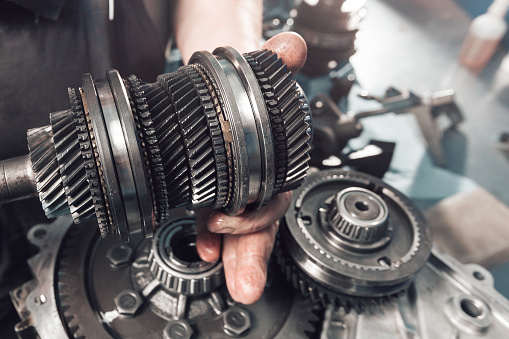February 23, 2023
3 Essential Things to Know About Transmission Repair
A healthy transmission is essential to the life of your vehicle. The transmission directs power from the engine to the gears in order to make the car drive at any given speed, which means that without a working transmission, you’re not going to get very far.
That being said, keeping up with your transmission’s maintenance is vital. If the transmission deteriorates too much, it can lead to problems with other parts of your vehicle. Transmission repairs can also be confusing.
1. Replacing a transmission can be expensive
As with any part replacement, the cost of a transmission repair depends largely on the car – is it domestic or imported, a luxury or an everyday vehicle? However, if the transmission needs to be fully replaced, it can end up costing thousands of dollars, which is an expense hardly anyone wants to shell out. We recommend keeping up with your transmission’s maintenance schedule and routinely checking it for any issues; it can save you a lot of money in the long run.
2. Change your transmission fluid according to the manufacturer’s instructions
Like motor oil and brake fluid, transmission fluid keeps the mechanical components of your transmission cool and lubricated. Over time, small particles can contaminate the fluid and lead to interior wear and tear. To prevent this damage, you can change the transmission fluid.
There is no need to change the transmission fluid too often, but it is important that you get it changed on time to prevent unnecessary damage. Check your owner’s manual for how often you should change your transmission fluid. Most cars require that it be changed every 30,000 to 100,000 miles, but some newer cars have sealed transmission fluid systems that are designed to last the entire projected lifetime of your vehicle.
Another way to keep your transmission fluid healthy is to flush it periodically. This service should not be done too often either, and you should check with your car’s manufacturer to see if it is recommended. Power-flushing the system can dislodge sludge and debris, which could clear out the system, but it could potentially lead to clogs in other parts of your vehicle later.
3. Keep an eye out for anything unusual
Transmission fluid should never burn off. If you notice the fluid level is too low, then there is probably some sort of leak or damage. You can check for a leak by looking for red liquid on the ground underneath the car.
If the transmission fluid is abnormally dark in color and/or smells burnt, then there is an issue with the transmission that you should get checked by a professional.
Another sign that something is wrong with your transmission is an unusual noise or grinding when trying to shift gears or when the vehicle is in neutral. There may also be a lag between gearshifts, and the transmission may slide between gears while driving. Any of these issues are signs that you should take your vehicle in to be checked out as soon as possible.
What happens during transmission repair?
The primary aspect of a transmission service is flushing out the old transmission fluid and replacing it with new fluid. However, a complete transmission service should also include: examining the sump pump or pan (if possible), replacing or cleaning the filter, cleaning the pan and installing it with a new pan gasket.
How do you know if you need a transmission repair?
You Have a Fluid Leak. ... You Smell a Burning Aroma. ... Your Gears Are Slipping. ... Your Vehicle Is Refusing to Switch Gears. ... Your Vehicle Is Unresponsive.

